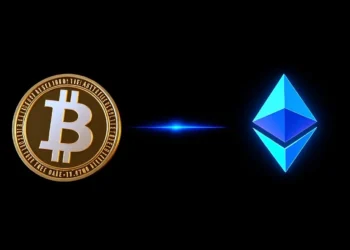Introduction
Imagine trying to keep your crypto safe with a single key that you hold. Now, think about what happens if someone steals it or tricks you into giving it up. That’s where MPC wallets come in. They use a new kind of technology to make controlling your crypto safer and more private. As digital assets grow in value and importance, so do the threats to your wallet. Hackers and scammers are always looking for weak spots in traditional wallets. That’s why many are turning to Multi-Party Computation (MPC) wallets. They let users and institutions store and manage crypto with better security, privacy, and control.
Understanding Multi-Party Computation (MPC) Technology
What Is Multi-Party Computation?
Multi-Party Computation, or MPC, is a fancy term for a cryptography method. It allows multiple people to work together on a task without sharing their private data. Imagine a group of friends planning a surprise party. They tease around some info but keep their individual secrets safe. That’s similar to how MPC works with your crypto keys. It’s been around since the early 1980s and is built on some deep math. The idea is to keep private data hidden while still allowing complex computations or decisions.
How MPC Works in Wallet Security
Here’s how MPC connects to crypto wallets. Instead of one person or machine holding all the private keys, the key is split into multiple parts. These parts are stored in different places or shared with different people. When it’s time to make a transaction, each part helps sign the transaction without revealing the entire key. It’s like multiple people giving a thumbs-up without ever showing the full password. This makes hacking or stealing the full key nearly impossible because no single party holds the complete secret.
Benefits of MPC in Financial Security
Using MPC reduces the risks that come from a single point of failure. If one part gets compromised, the rest still protect your assets. It also improves privacy because the full private key is never exposed. Plus, you get more control with options like threshold signatures, meaning only a certain number of shares are needed to approve transactions. Compared to traditional hardware or software wallets, MPC wallets can offer better security, privacy, and operational flexibility.
Features and Functionality of MPC Wallets
Key Features of MPC Wallets
- Distributed key management: The private key is broken into pieces, stored in different locations.
- Threshold signatures: Only a set number of parts are needed to sign off on transactions.
- Access controls and recovery: You can set rules for who can sign and how to recover access if you lose parts.
How MPC Wallets Operate
Here’s an easy way to understand the process from start to finish:
- Create Keys: Multiple parties generate key shares without exposing the full key.
- Store Shares: Each part is safely stored in different secure locations.
- Approve a Transaction: When you want to send crypto, each party signs a piece of the transaction, but no one sees the full key.
- Complete the Transfer: The signatures combine, and the transaction moves forward.
Big platforms like Fireblocks and Gnosis Safe use these steps to make managing assets more secure. They give users full control without risking exposure of sensitive information.
Why MPC Outshines Traditional Wallets
- It’s tougher for hackers to break in since they’d need multiple key shares.
- Institutions find it easier to manage large amounts of crypto.
- It reduces operational costs because there’s less need for multiple hardware devices.
- The process promotes better recordkeeping and easier audits.
Use Cases and Industry Adoption of MPC Wallets
Who Uses MPC Wallets?
Many big players in crypto trust MPC wallets for their security needs:
- Crypto exchanges like Coinbase
- Hedge funds managing big assets
- Institutional investors looking for safer options
Recent stats show MPC wallet adoption is growing fast. As more institutions look for smarter ways to protect assets, these wallets are becoming more common.
Popular Use Cases
- Multi-party custody: No single person controls everything, reducing risk.
- Cross-blockchain operations: Manage assets across different chains easily.
- Decentralized Autonomous Organizations (DAOs): Enable collective decision-making while keeping control secure.
Market Trends
Data shows a sharp rise in MPC wallet usage with predictions that this growth will continue. Industry insiders expect more innovations to make MPC even better for enterprise-scale security.
Challenges and Limitations of MPC Wallets
Technical and Implementation Problems
Setting up MPC wallets isn’t simple. It needs careful planning and ongoing maintenance. Also, performing transactions can take longer because of the extra steps involved in combining signatures.
Security Concerns
While MPC offers better security, vulnerabilities can still exist. For example, if someone tricks a part of the system into revealing information, the whole setup could be at risk. Insiders with access to key shares can also pose threats if not properly managed.
Legal and Compliance Issues
Different countries have varying rules about crypto security and privacy. Using MPC wallets might require careful legal planning. Also, transparency and auditability are important for regulatory compliance, which adds another layer of complexity.
Best Practices for Using MPC Wallets Effectively
Strengthening Security
Regularly check all key shares for issues. Use multi-layered controls and keep the software updated for security patches.
Improving Operations
Incorporate MPC wallets into existing security plans. Train your staff on best practices for managing these systems.
Preparing for the Future
Stay up-to-date with new tech and standards. Join industry groups to learn from others and help shape future solutions.
Conclusion
MPC wallets combine powerful cryptography with clever management to boost crypto security. They offer advantages like decentralization, privacy, and simplified control for large assets. While they aren’t perfect and carry some challenges, their benefits outweigh the risks for many investors and institutions. As the need for better security grows, adopting MPC technology can help future-proof cryptocurrency storage. For anyone serious about protecting digital assets, these wallets are becoming a must-have tool.
Key Takeaways
- MPC wallets split private keys into several parts, making them safer.
- They are growing in use among institutions needing secure crypto custody.
- Even with many benefits, ongoing innovation is needed to solve technical challenges.

























